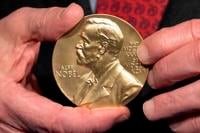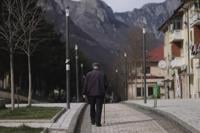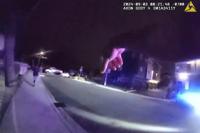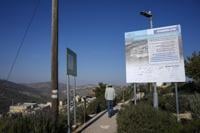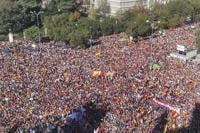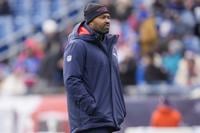NEW YORK (AP) — Jurors asked Wednesday to review police and bystander video at the heart of the chokehold manslaughter case against Daniel Penny as his lawyers complained that the Marine veteran was being harassed outside the New York City courthouse.
On the second day of , the also asked to rehear part of a city medical examiner’s testimony. The request included her testimony about issuing a death certificate without getting toxicology test results for , the agitated subway rider whom Penny held around the neck for roughly six minutes.
Penny has to manslaughter and criminally negligent homicide.
Prosecutors say he recklessly squeezed Neely’s neck too hard and for too long. Penny's defense maintains he was justified in acting to protect fellow subway riders from Neely, whose erratic behavior and ominous words were frightening passengers.
Jurors sought a second look at a bystander’s video that captured much of the restraint; responding officers’ body camera videos; and police video of Penny’s subsequent station house interview with detectives.
A major aspect of Penny's defense entails contesting the city medical examiner's office's that the chokehold killed Neely.
In part of the testimony jurors reheard Wednesday, city medical examiner Dr. Cynthia Harris said Neely’s autopsy, the bystander’s video and investigative findings gave her all the information she needed.
“No toxicological result imaginable was going to change my opinion,” she said, even if they showed “enough fentanyl to put down an elephant.”
Fentanyl is a powerful opioid that caused an in the U.S. last year. Neely was ultimately found to have a different drug — synthetic marijuana, often known by the street name K2 — in his system when he died. Harris testified that deaths from K2 overdoses are very rare, particularly in people with normal hearts, as Neely had.
A pathologist hired by the defense of schizophrenia, K2 use, a genetic condition and his struggle with Penny.
Witnesses said Neely boarded a train in Manhattan on May 1, 2023, started moving erratically, yelling about his hunger and thirst, and proclaiming that he was ready to die, go to jail or — as Penny and some other passengers recalled — kill.
Penny came up behind Neely, grabbed his neck and head, and took him to the floor. The veteran later told police he “just put him in a chokehold” and “put him out” to ensure he wouldn’t hurt anyone.
The case has about public safety, societal responses to mental illness and homelessness, the line between self-defense and aggression, and the role of race in all of it. Penny is white, while Neely was Black.
A few protesters have routinely gathered outside the courthouse to decry Penny as he comes and goes. Some Penny supporters also have appeared, sometimes holding a flag.
Defense lawyer Thomas Kenniff said in court Wednesday that at one point during the trial, a protester followed Penny to a waiting car and banged on the doors. Then, the attorney said, the same man hurled “violent” slurs at Penny when he arrived Wednesday.
An Associated Press journalist witnessed a person making a crude and taunting remark to Penny as Penny made his way to court.
Kenniff said the man sometimes had been in the courtroom audience, and he asked Judge Maxwell Wiley to bar the man.
Wiley — who said he'd seen the car incident from his office window — declined, noting the public's right to access court proceedings. He said court officers had occasionally “limited people's access” because of their conduct inside the courtroom, but he wasn't inclined to eject anyone over behavior outside.
Penny's lawyers also reiterated their concern that the jury might hear the protesters. Wiley noted that he has told jurors to ignore anything they might hear from outside the courtroom.
“At this point, I think that we will assume that they’re following their instructions,” the judge said.
Jurors will return Thursday to hear more of Harris' testimony and then deliberate further.
___
Associated Press journalists Larry Neumeister and Ted Shaffrey contributed.




















